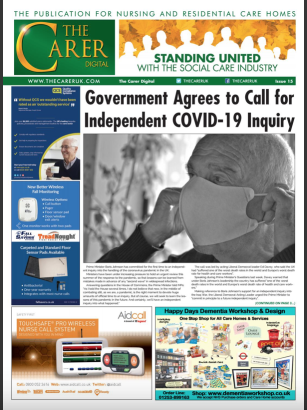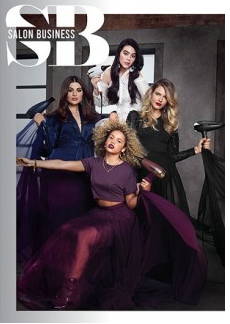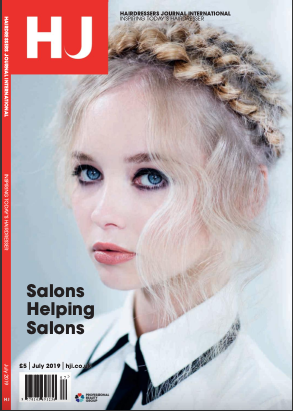Facing Up - A Plastic Distraction in Lockdown
- Sound Marketing
- Sep 29, 2020
- 7 min read

Lockdown...
The low-slung office with a stunning view of Whiteleaf Cross - a chalk hill carving hereabouts - has been exchanged for an eight-by-six garden summerhouse. Fortunately, for most of lockdown, summer weather has been the norm, and the ancient heater that rattles and hums has been used only sparingly. Work goes on at Sound Marketing. Life is onscreen. Percy the Puggle (the PR dog) is furloughed in his basket, dreaming of gala dinners and his adoring public...
Work goes on. Our regular clients all work in the technology field in one form or another, and their ingenuity knows few bounds, so consequently they are problem-solving, adapting, anticipating, preparing and developing - so we are reporting, supporting, imagining, consulting and creating...
Some weeks ago, as we pondered the future (who doesn’t these days?), we were contacted by someone from outside our usual AV, audio and lighting circles, with a view to carrying out a one-off project. The ‘one-off’ is something that happens from time to time within our sector - and we’re certainly always up for an interesting piece of AV ad-hockery, but we’ve only ever had a very few occasions to step outside our niche. Whether this example will open a door for us into a particular new world is an interesting thought. It is however, very much a story of the times...
The Plastic Man Cometh

Clive Hawkins is in plastic. That is to say that his company, 1st Packaging, manufactures all manner of cartons, sleeves and tubes, for clients that include the UK’s supermarket giants, as well as a host of independent food producers. Plastic is a hot topic. That would be difficult to deny. The world probably needs a bit less plastic and a lot more recycling. Clive knows this and his company works assiduously to use more and more recycled raw materials, always stringently adhering to, and most often exceeding, the demands of environmental legislation.
Plastic is also handy stuff.
When the true impact of the COVID-19 pandemic revealed itself, one of the immediate issues faced by those in health care was the shortage of personal, protective equipment. This wasn’t lost on a man who very much knows his plastics from his elbow, and so 1st Packaging began looking at the manufacture of face-shield visors that could be supplied quickly and cheaply to frontline workers. A customer request hastened the process and following that phone call, taken at 5.20pm on a Friday, things moved quickly. By 11.30am on the Sunday of that weekend, 4,500 visors, conforming to British safety standards, had been delivered to frontline healthcare workers in the Midlands. 65,000 were produced in the first week and production capacity now stands at 250,000 per week. As the consequences of the pandemic hit home for education, retail, transport, leisure and manufacturing, the need for PPE was growing, and Clive saw a win-win situation arising. People would need visors, Clive could make them in huge numbers - instead of food packaging - he could support a huge demand and keep his team gainfully employed.
StaySafe Visor, this brand new subsidiary of 1st Packaging, required some support. Being local to us, Clive knew what we did and explained to us what he needed. For a brand new business, and one that needed to act quickly, we launched a paid social media advertising campaign. Paid, because as a new entity, no ‘following’ existed and anyway, organically growing a fan-base for plastic visors would more than likely prove a slow and tortuous exercise. Useful yes, sexy...no. Whilst everyone with a 3D printer and a kilo of plastic was hard a work creating twenty-five units in a day, Clive and his team were making thousands, and when the cottage industries began to run short of supplies, Staysafe wheeled out another ton of plastic and kept right on going...
Paid Social

We’ve run a number of campaigns across a wide variety of businesses and the early stages of any such exercise are something of a ‘trial and error’ period. Once under way, conclusions can be drawn based on analysis of the data and the approach adjusted accordingly.
Initially we chose a campaign optimised towards brand awareness, to drive as much traffic as possible towards the Staysafe website and gain as much brand exposure as possible within a short time frame. This campaign was successful in the sense that we were able to reach a lot of impressions with a relatively small budget. However, we were not seeing the desired sales figures so modified the campaign as it progressed, aiming towards website visits (traffic).
Once the campaigns were optimised, we saw an increased click-through rate, and increasing sales. We then experimented with copy and assets, choosing a combination of demographic-based, interest-based and those by job title, allowing analysis of which copy and which images worked best for these different audiences. In this case, for the company’s Kidsafe visors, we looked at parents who had children between certain ages, in line with the product recommendations. We also were able to target users who had interests in anything maternal or paternal, suggesting that they probably had children who could benefit from the products. For the Staysafe adult product, there was minimum batch purchase amount, so we had to target by job-title based on who would most likely have that purchasing power - a Health and Safety Officer, or Warehouse Manager for example.
Both the Kidsafe and adult Staysafe campaigns began with copy that tended towards explanation of the benefits of visors in given situations of risk, but we discovered that amongst a minority of Facebook respondents, this seemed to prompt a sense that somehow Staysafe’s motives were driven by profiting from fear. Imagine! The fact that this was completely contrary to Clive’s ethos led us to conclude that a simple ‘matter of fact’ message, centred on availability, safety-standards and properties, might diffuse the emotive negativity. Having removed the stimulus for any arguments, responses were overwhelmingly positive and interested. Sales increased.
Careful note was taken of the imagery used and it was clear that some of our photographic assets worked much better than others. It appeared that consumers were turned off by images of health and care professionals wearing visors, but by comparison, where there were images of hairdressers or retailers, click-through rates went up. Relatability turned out to be a key factor. Whilst we considered that a health worker might represent the idea of ‘safety and reassurance’ it probably triggered a “what’s that got to do with me?” response. Once we got into haircuts and shelf-stacking, the penny appeared to drop. Every campaign is a learning curve. In this case at least, it was steep and pretty successful.

Infiltrating the Influencers
Influencer marketing has to be one of my least favourite phrases. I think my prejudice stems from a combination of age, scepticism and a healthy dose of jealousy. Why on earth do people buy a flashing dog-collar because Dermott K Nine, blogger and influencer extraordinaire, says it’s what his poodle is wearing this spring? I really don’t know, but the trouble is...they do, and my jealousy probably stems from the fact that I’m not the one getting a billion YouTube hits (and £££s) for talking up fountain pens. Accepting this whole concept is tough for for a man brought up on a big monster instructing mothers to tell their kids about the honey (Honey Monster as influencer for Sugar Puffs? Discuss...), but accept it I must.
Influencers gain followers organically and encourage sales. Being strategic, and of course ensuring that the followers of your chosen influencer match the demographic of the target market, is key (yes it’s obvious but...). Checking to make certain that an influencer shares your brand values is also time well spent. It’s tempting to fall for the idea that ‘bigger is better’ and that the higher the numbers of followers, the greater your chances of success, but in many cases, and certainly in this one, micro-influencers (generally 10k-50k followers) seem to have better engagement, and are seen as more authentic. Micro-influencers will often work on a ‘gifting’ basis, so rather than paying for promotion, it’s a case of sending them a product and they post about it if they like it. This was the strategy chosen for the Kidsafe visors - we wanted to receive genuine reviews from people that considered the product to offer a real benefit.
We supplied our chosen micro-influencers with all relevant brand and product information as well as the visors themselves. Having an insight into the brand’s story better informs the influencer’s decision to promote, and gives them something to talk about - a visor on its own is...well...a visor!
The influencers were carefully chosen, and I grudgingly have to admit that this aspect of the project worked really well. It was a highly cost-effective way of gaining exposure on social media and definitely drove traffic towards the website, doubtlessly resulting in Kidsafe sales. People trust their influencers - enough said.
Trad Ad and all that...
Amidst the cut and thrust of social swordplay, Steph worked closely with Clive to identify relevant online and paper publications where we could place the trusty old faithful - the advertorial. There were plenty of them and we rolled a basic piece of copy into a number of shapes to more closely fit a given bill. The selection and creation of visuals appropriate to each publication was important, as was ensuring that the imagery suited the wide variety of formats across the magazines.
Negotiation paid dividends, and so did following up and checking to see if the ad was appearing as and when promised - there is no wisdom in paying for something you’re not getting!
The judicious use of UTM codes in the online publications confirmed that this kind of advertising is still as useful as ever.

Did it all Work?
In short, it certainly appeared to. This was a brand new venture - no history, no default position - but it certainly was (and still is) addressing a need. What Staysafe needed was a swift, clearly defined introduction to the market, and judging by its success, that’s what it got!


























Comments